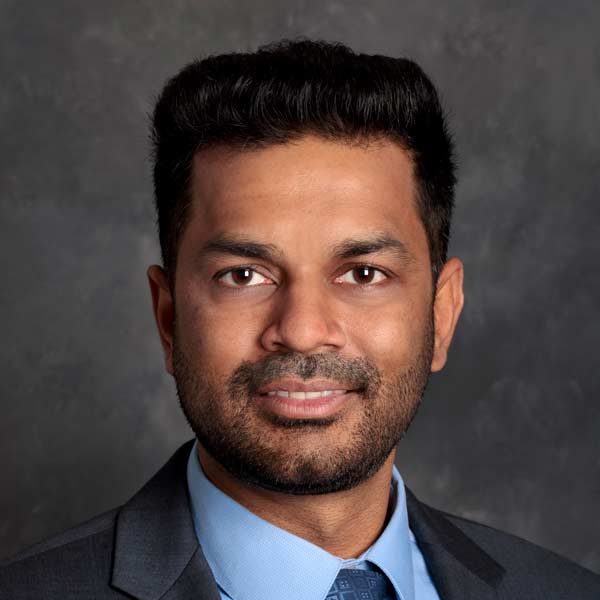
Assistant professor of medicine Deepak Bhere was drawn to the study of stem cell therapy because he wanted to do research that has real impact on patients’ lives. His team at the University of South Carolina School of Medicine Columbia has the potential to do just that as they pursue new treatment options for patients with glioblastoma.
Fast-growing malignant brain tumors, glioblastomas are typically fatal. By the time a person is diagnosed, they probably have a significant-sized tumor, about the size of a golf ball. The first option is to surgically remove as much of the tumor as possible, but because of the tumor’s location, surgery is only so effective.
“The brain being a very sensitive organ, it’s impossible for the surgeon to get the entire tumor out because that could actually cause the patient to be paralyzed for the rest of their life or could lead to loss of senses, things of that sort,” Bhere says.
Radiation and chemotherapy with the drug Temozolomide follow, but patients typically only live 14 to 16 months after diagnosis.
“The residual tumor that grows back actually is resistant to most available treatments. It just keeps growing and is not responsive,” Bhere says. “That’s why the patients end up dying. And that’s a very sad thing.”

“When the surgeon removes a mass of the tumor, cells will be prepared and inserted into the patient’s brain cavity. We use certain microRNA, which can halt the progression of the tumor, and we use oncolytic viruses that specifically kill the tumor.”
Bhere is hopeful he can improve the odds. He and his team are working on a multifaceted approach to treating tumors — one that harnesses the tumor’s own genetic makeup to create a better targeted treatment. His innovative approach involves the use of adult stem cells, expressing tumor-targeting proteins and small molecules that target and destroy tumor cells while sparing healthy brain tissue.
These stem cells are anchored at the tumor site using a biodegradable gel made of hyaluronic acid. This method prevents the stem cells from being washed away by cerebrospinal fluid, ensuring that the treatment remains localized and effective.
“When the surgeon removes a mass of the tumor, cells will be prepared and inserted into the patient’s brain cavity,” Bhere says of the proposed treatment. “We use certain microRNA, which can halt the progression of the tumor, and we use oncolytic viruses that specifically kill the tumor.”
But there’s still a major hurdle: Stem cells are naturally programmed to create new cells and thus have the potential to form tumors themselves. In the past, this risk has been mitigated by incorporating a “suicide gene” into the stem cells. A patient takes a pill, which activates a suicide gene that kills the stem cells once treatment is finished.
Bhere’s team is looking at using extracellular vesicles, which are shed from stem cells. They contain the target microRNA cargo needed for effective treatments, eliminating the need for the suicide gene.
Although the individual components in Bhere’s combinatorial approach are approved by the Food and Drug Administration, the combination is considered a new treatment and must go through the same rigorous approval process as other treatments. That could take years, but Bhere expects to be able to show rapid progress once his team gets FDA approval.
The goal, Bhere says, is to have multiple treatment options, paving the way for the study of patient tumor cells to determine what kinds of receptors or gene signatures are present.
“Then we can have all of these stem cell products A through Z, and you can pick A plus B, or A plus Z, as a combination that would work for that particular patient,” he says. “We want to create an off-the-shelf approach so we can quickly understand the gene signatures and be able to administer the treatments.”